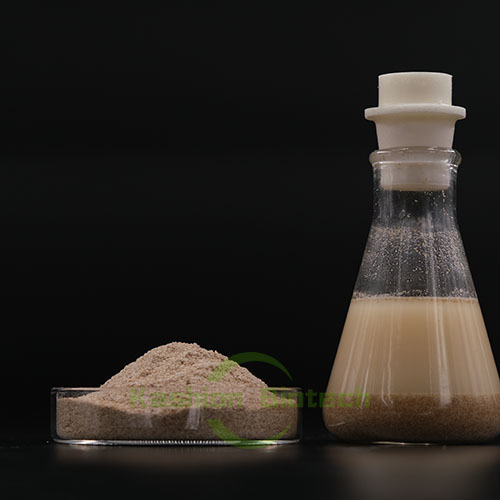
Home Products Sewage Treatment Bacteria Petrochemical Wastewater Treatment High Efficiency Aerobic Sewage Treatment
Aerobic Sewage Treatment Bacteria can effectively inhibit the growth of spoilage bacteria and the reproduction of pathogenic microorganisms, reduce the production of biogas, ammonia, hydrogen sulfide and total phosphorus, and improve water quality; quickly degrade various carbohydrates and organic matter in sewage, and degrade BOD, COD and TSS and other harmful substances to improve the solid sedimentation capacity in the sedimentation tank.

What are the reasons for the tumbling and turbidity of the fine sludge in the secondary sedimentation tank?
①The sludge load in the aerobic tank is too small, the aeration is excessive, and the sludge itself oxidizes, resulting in poor flocculation of the sludge and dispersion of the sludge structure (the water is turbid and there are many suspended solids)
②The sludge load in the aerobic tank is too large, the dissolved oxygen is insufficient, the adsorption performance of the sludge becomes poor, and the organic matter is not completely decomposed.
③The load of the secondary sedimentation tank is too high, or the water distribution of the secondary 4 r tank is uneven, and the phenomenon of gravity flow occurs, and the local flow rate is too fast to carry the sludge.
④The reflux ratio of the secondary sedimentation tank is too large, the mud layer of the secondary sedimentation tank is too low, and the dynamic mud layer of the water flow is too large (there are few reasons for this).
⑤The excessive discharge of sludge in the aerobic tank leads to the short sludge age of the aerobic tank, and the newly synthesized sludge flocs are difficult to settle (the water is clear and there are many suspended solids).
⑥The sludge bell in the aerobic tank is too long and the sludge is aging.
⑦The aerobic tank sludge has insufficient nutrients or the ratio of nutrients is uneven (the ratio of N and P is too high).
⑧Sludge bulking phenomenon occurs in the sludge in the aerobic tank, the settling property is poor, the sludge layer in the secondary sedimentation tank is high, and the water flow will carry the sludge out (this will happen when the svi value is too high or too low).
⑨The nitrogen content of the atmosphere in the sewage of the aerobic pool is too high
Name: Nicole Yu
Mobile:+86 17718148007
Tel:+86 17718148007
Whatsapp:8617718148007
Email:sales@kashionbiotech.com
Add:No.6, Zhanxi Road, Yaohai District, Hefei City, Anhui Province, China.